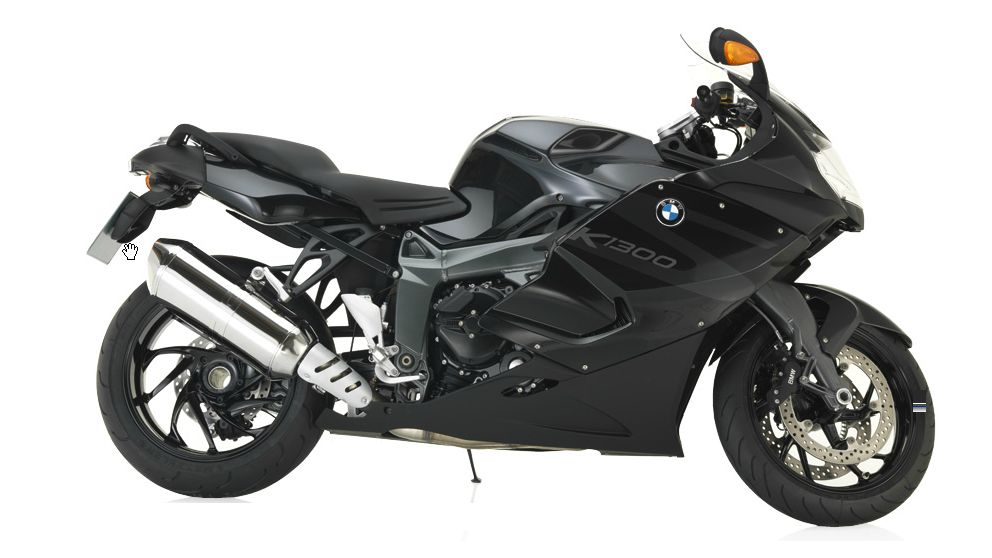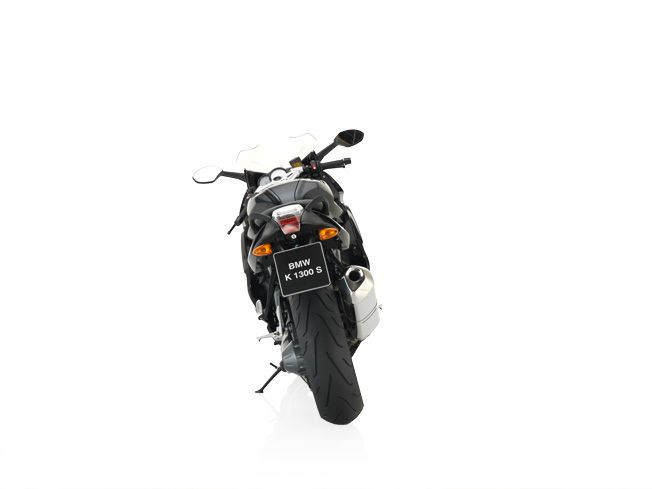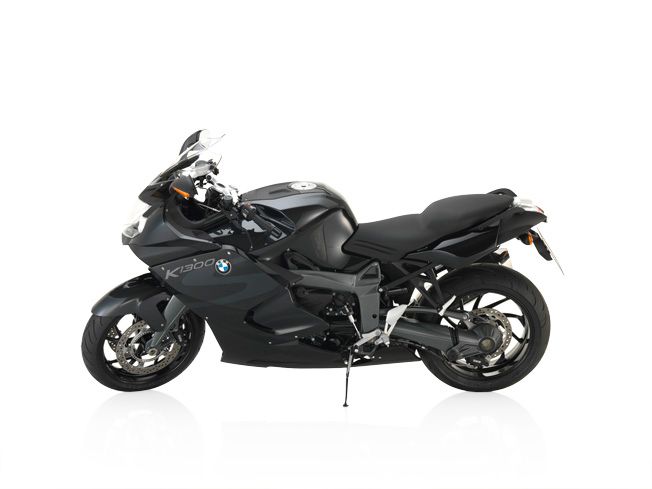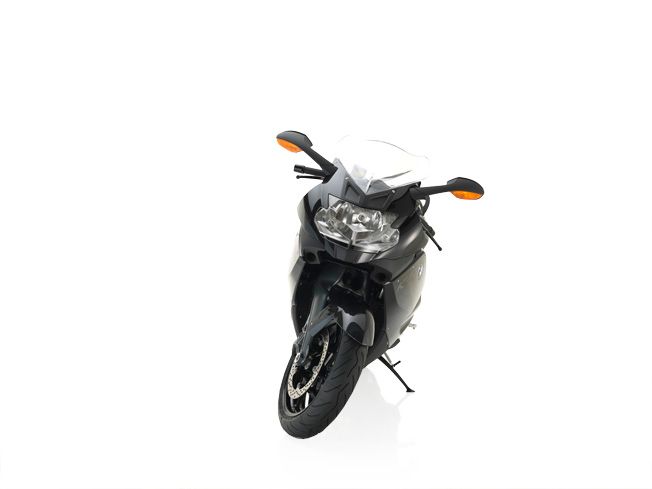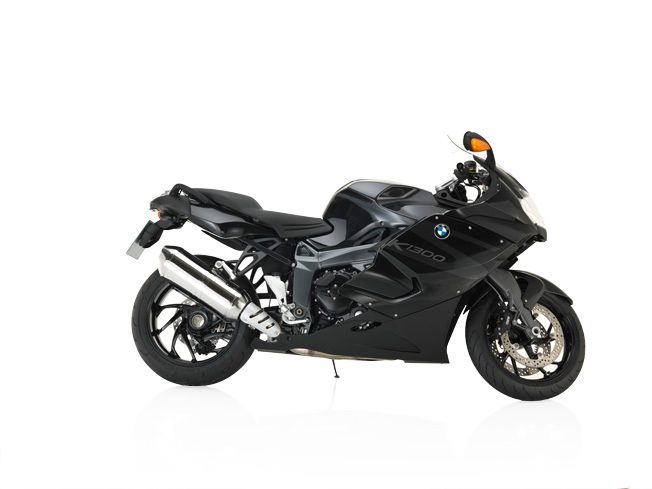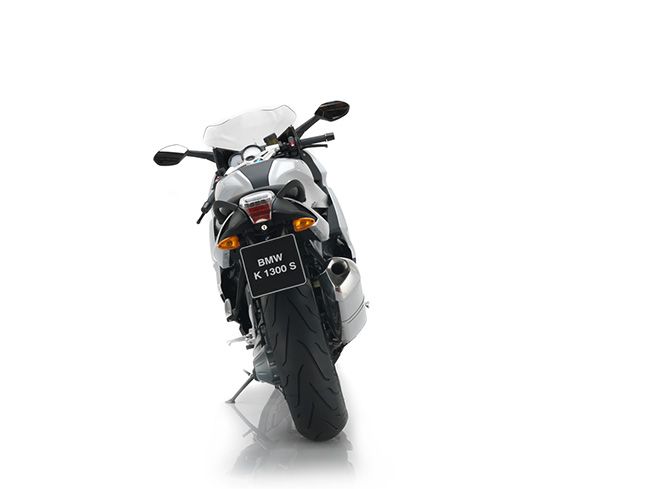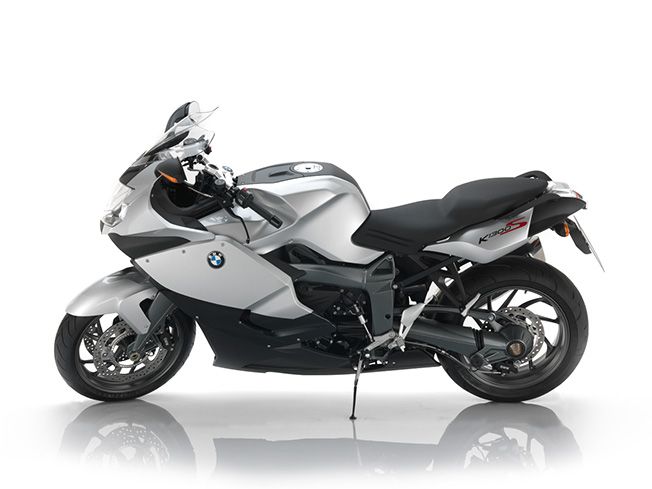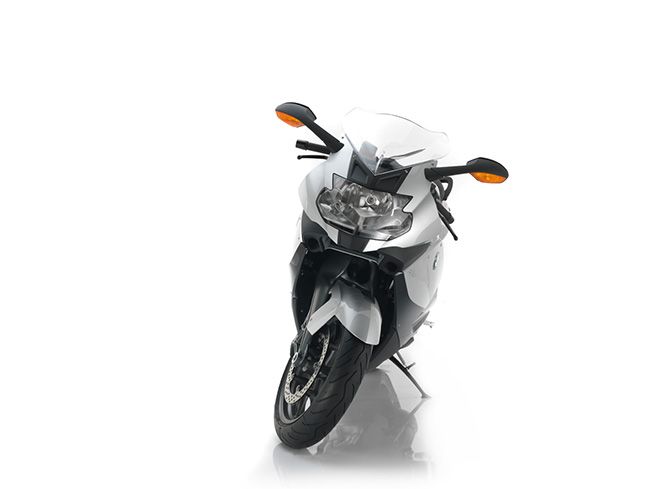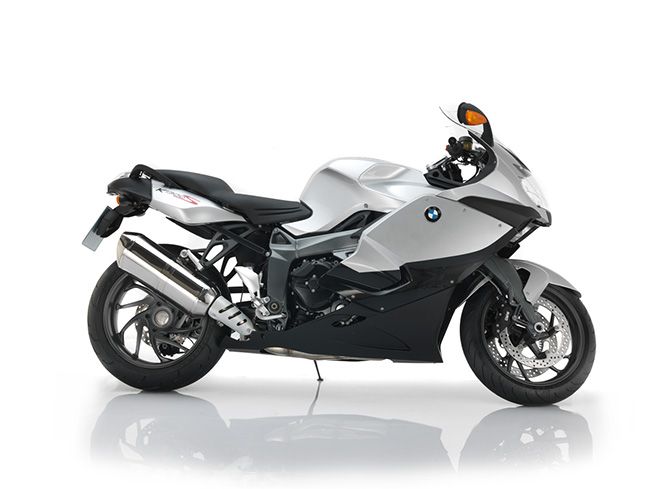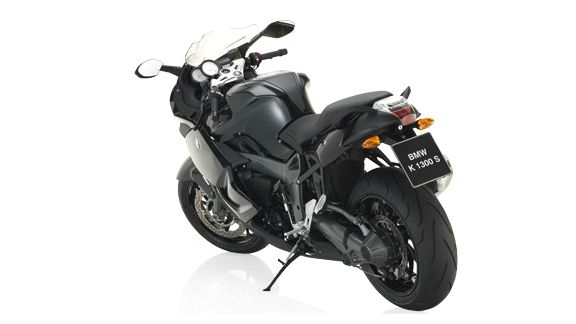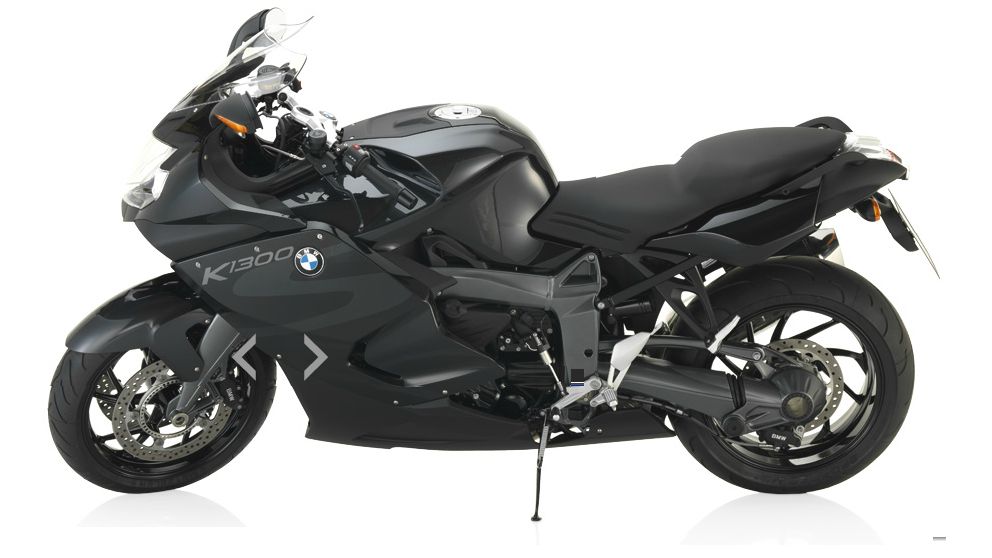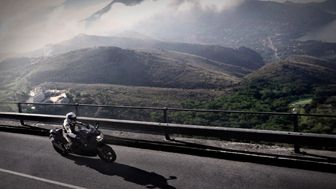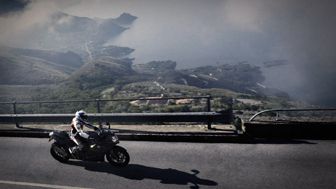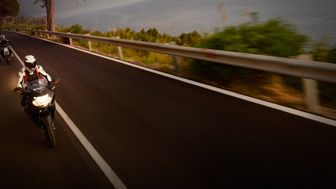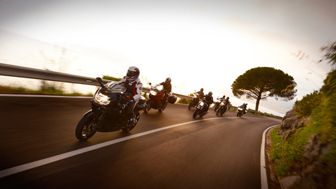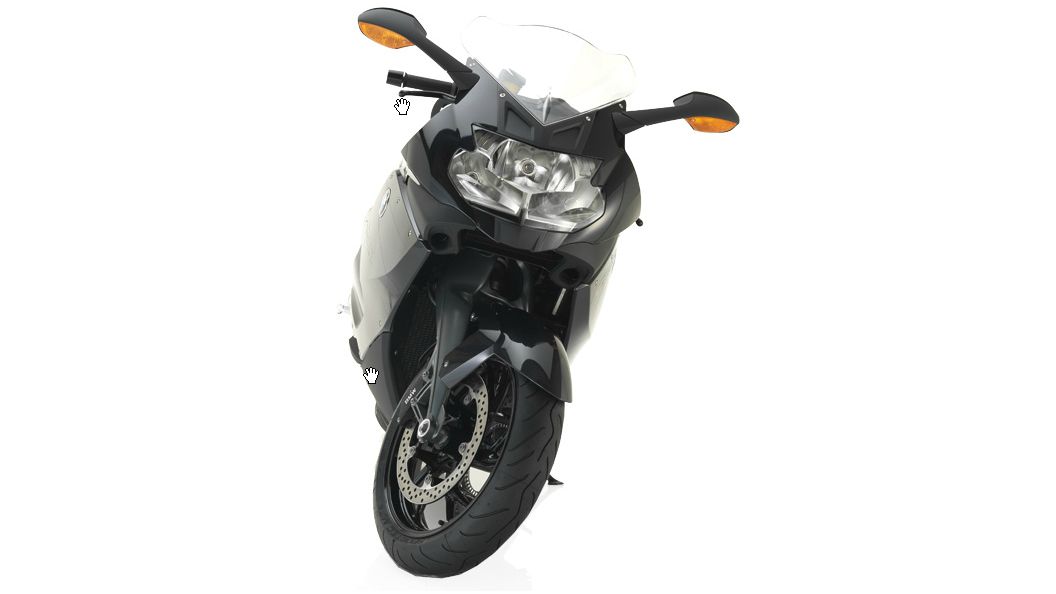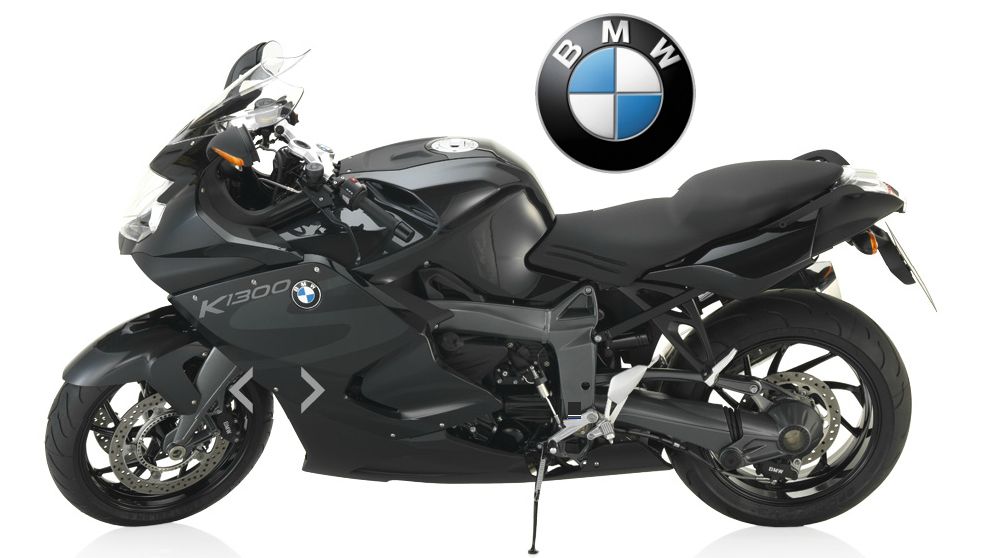Sport-touring->ke2669 is the name of the game when you take a sportbike->ke631 and give it an upright, comfortable seating position that'll let you go for miles. The K 1300 S from BMW Motorrad->ke1398 is one of those bikes.
When standing still, the K 1300 S looks like it's going to be fast. When you start it up, it sounds like it's going to be fast. And you know what? When you ride it, it is fast. Sure there are bikes out there with more horsepower and higher top speeds, but the K 1300 S is built solid, it feels solid and when you get it out on the pavement, it doesn't disappoint.
Continue reading for my review of the BMW K 1300 S.
bmw-k-1300-s
- Make: Array
- Model: bmw-k-1300-s
2014 - 2016 BMW K 1300 S
- Make: Array
- Model: 2014 - 2016 BMW K 1300 S
- Engine/Motor: Water-cooled 4-stroke in-line four-cylinder-engine, four valves per cylinder, two overhead camshafts, dry sump lubrication
- [do not use] Vehicle Model: Array
Design
With a standard seat height of 32.3 inches and an optional low seat height of 31.1 inches, this is no means a “low seat height” bike as we might see on the cruiser->ke392-based touring bikes. It's DNA is sportbike and that shows. So where does the tourer come in?
First off, the rider position is upright and the seat is comfortable -- meant for long miles in the saddle. Overall, the bike is heavy; okay, maybe not heavy as much as it is solid so you really feel like you're riding an piece of substantial machinery. The long wheelbase really smooths out the bumps in the road and “smooth” is the word when it comes to power delivery and shifting. Rev-matching is nice -- no jolting clunks or power surges when shifting. Not as flickable like you'd expect a sportbike to be, the chassis geometry is obviously meant to give more straight line stability and not so much knee-dragging agility. All this makes for a bike that you can keep your butt in the saddle from fill-up to fill-up.
Chassis
BMW set out to keep the “S” as light as possible, and it largely succeeded with a 560-pound, unladen curb weight, due in part to the factory's choice of frame materials. Aluminum members form the bridge-type frame, and the stressed-engine arrangement replaces a chunk of frame with the engine as a load-bearing component for even more weight savings to keep total frame weight at 25.4-pounds.
A cast-aluminum, single-side swingarm pulls double duty as the housing for the drive shaft and bevel gear, an arrangement that leaves room to tuck the muffler in nice and tight on the right side. The steering angle according to the factory is 60.4 degrees, but in the U.S. we would call it 29.6 degrees, with 4.1 inches of trail.
BMW's Duolever front suspension represents the most viable alternative to the modern, telescopic wet forks, and this setup gives us a 32-degree steering angle from center to lock in both directions. A pair of light-alloy lower arms keep unsprung weight at the front wheel low, and the Electronic Suspension Adjustment allows for touch-button adjustments to spring rates and damping strength for both front and rear. On the other end, BMW's Paralever monoshock buoys the rear and comes with a handwheel for spring preload adjustments. Suspension travel measures out at 4.5-inches and 5.3-inches at the front and rear axles, respectively.
A set of 17-inch, cast aluminum rims mount a fat 120/70 front wheel and a really fat 190/55 in back for a nice, beefy contact patch. Dual front brakes run 320 mm discs with four-pot calipers and the rear gets a 265 mm disc and twin-pot caliper all with BMW's “part-integral” ABS that's actually more of an ABS feature with a linked-brake function added on. Basically, when you apply pressure at the front brake lever, both front and rear calipers bind their rotors, but pressing the rear brake pedal activates the rear brake alone. According to the factory, this is done to improve tire grip during extreme maneuvers, but you'll forgive me if I don't want to test their theories myself.
Drivetrain
A liquid-cooled, inline-four mill serves as the beating heart for the K 1300 S, and as you might expect from BMW, it's a technological marvel. The 80 mm bore and 64.3 mm stroke adds up to a total displacement of 1,293 cc, and the oversquare layout leaves the engine with the capacity to produce gobs of horsepower. Official numbers bear out the theoretical with a total of 175 ponies at 9,250 rpm and 103 pound-feet of torque at 8,250 rpm, figures that place it toward the supersport->ke293 end of the power spectrum. Top speed is something North of 125 mph, so it also encroaches on the stupidfast bracket as well. One thing is for sure; the 13-to-1 compression ratio definitely puts you in high-octane, supreme-grade champagne country.
The cases come beefed up for their role as both engine components and frame members with a pressure-cast bottom end and a die-cast upper case half, all made from a lightweight aluminum alloy. Super-light conrods weigh in at only 404 grams apiece, and the end caps are made using the “fracture split” method for superior fitment. Excess waste heat is carried off from the piston crowns by an oil jet to extend the life of the pistons and prevent galling. A four-cylinder engine with four valves per cylinder, it uses a Desmodromic valvetrain to time the valves and combat valve float at high revs.
BMW's Alpha-n engine management feature reads engine status and throttle-plate position to accurately control ignition timing as well as the volume and timing of the fuel injection, taking into account which of the variable control maps is currently selected. An Anti-Spin Control (ASC) feature is available as an option so you can have the safety net afforded by traction control, or you can leave it off the bike entirely.
A six-speed, constant-mesh transmission crunches the ratios for 50 mpg at 55 mph, and it sends the power to the rear wheel via shaft drive. All of this adds up to a lot of controllable power with a smooth delivery for low-stress riding.
Pricing
MSRP on the 2016 K 1300 S is $15,995 and comes in Sapphire Black Metallic and Dark Graphite Metallic. BMW covers your ride with a three-year or 36,000-mile limited warranty.
Competitors
There is no shortage of sport-touring bikes out there, and the Big Four in Japan seemed like the place to start looking. I liked the FJ-09 in Yamaha->ke301 was a little too something that I couldn't quite put my finger on, I looked at the Yamaha FJR1300A and liked it a lot.
The FJR has the same sporty stance as the K 1300 S, with a similar relaxed rider triangle that provides an upright riding posture that is more comfortable to maintain over long distances than the Superman position you are forced into on a pure sportbike. The front fairing may be a tiny bit beefier on the FJR, and the windshield a little taller for a bit more in the way of wind protection, so it will definitely be a less tiresome beast to ride for long distances. A set of hard panniers completes the touring package for the stock FJR, but BMW has bags of its own on tap in the accessories catalog so the option is there, if not stock.
BMW comes off looking like the King of suspension with its unconventional front fork arrangement complete with push-button ride-quality adjustments for both ends of the bike, but Yamaha made a good showing for itself with fully adjustable, hydraulic front forks and a rear shock with adjustable preload and rebound damping. Both manufacturers offer ABS with some sort of linked-braking function that delivers balanced braking effort on demand, so while neither gain an advantage, they both certainly get points for looking out for their customers' safety.
Both bikes run an inline four with water cooling and a total of 16 valves, though the Yamaha runs a conventional spring-return valvetrain while BMW uses the Desmodromic. BMW surrenders a handful of cubes with 1,293 cc versus 1,298 cc with the FJR mill, but absolutely demolishes Yamaha on the Dyno. BMW cranks out 175 ponies and 103 pounds of grunt where the Yamaha produces a mere 145 ponies and 92 pounds, so as far as brute force goes, BMW has you covered.
BMW picks up another win at the checkout with a $15,995 sticker, just a skosh cheaper than the $16,390 tag on the stock FJR. Not really a big differenceat this price, but in the end I have to say you are getting a lot more technology for your buck with the BMW K 1300 S. Add a set of bags out of the accessories catalog and that price difference is wiped clean.
He Said
My husband and fellow motorcycle writer, TJ Hinton, says, “I'm not really seeing the touring capacity here, even with the add-on saddlebags, and it looks like another sportbike to me no matter what subtle variations have been made to the shape of the rider's triangle. That said, Beemer never ceases to impress, and the power figures from this not-so-big engine really speaks to the level of attention given to the design. In other words; exactly what I expect from the Bayerische Motoren Werke.”
She Said
“I like the ride. It feels solid, acceleration is positive, smooth and shows its sportbike DNA. I think to really be a tourer, I'd have to add some bags out of the accessories catalog, but that's just my preference. And for a sportbike, it sounds good to my ear. It sounds like it means business...not that whiney, high-pitch, pissed-off-lawnmower sound I associate with Japanese sportbikes. But that's just my personal opinion; I'm sure folks will disagree.”
Specifications
|
Engine: |
|
|
Type: |
Liquid-cooled 4-stroke in-line 4-cylinder engine, four valves per cylinder, double overhead camshafts, dry sump lubrication |
|
Bore x stroke: |
80 mm x 64.3 mm |
|
Capacity: |
1,293 cc |
|
Rated output: |
175 hp (129 KW) at 9,250 rpm |
|
Max. torque: |
103 lb-ft (140 Nm) at 8,250 rpm |
|
Compression ratio: |
13.0 : 1 |
|
Mixture control / engine management: |
Electronic fuel injection and knock sensor |
|
Emission control: |
Closed-loop 3-way catalytic converter, emission standard EU-3 |
|
Performance / fuel consumption: |
|
|
Maximum speed: |
Over 125 mph |
|
Fuel consumption per 100 km at constant 90 km/h: |
50 mpg at a constant 55 mph (4.7 l) |
|
Fuel type: |
Premium Unleaded |
|
Electrical system: |
|
|
Alternator: |
Three-phase 580 W alternator |
|
Battery: |
12 V / 14 Ah, maintenance-free |
|
Power transmission: |
|
|
Clutch: |
Multi-plate wet clutch, hydraulically operated |
|
Gearbox: |
Constant-mesh 6-speed gearbox with straight cut gears |
|
Drive: |
Shaft drive 2.82:1 |
|
Chassis / brakes: |
|
|
Frame: |
Aluminum bridge-type frame with load-bearing engine |
|
Front wheel location / suspension: |
BMW Motorrad Duolever, central spring strut |
|
Rear wheel location / suspension: |
Cast aluminum single-sided swing arm with BMW EVO Paralever; central spring strut with lever system, spring pre-load hydraulically adjustable (continuously variable) at handwheel, adjustable rebound damping |
|
Suspension travel front / rear: |
4.5" / 5.3" (115 mm / 135 mm) |
|
Wheelbase: |
62.4" (1,585 mm) |
|
Castor: |
4.1" (104.4 mm) |
|
Steering head angle: |
60.4° |
|
Wheels: |
Cast aluminum wheels |
|
Rim, front: |
3.50 x 17" |
|
Rim, rear: |
6.00 x 17" |
|
Tyres, front: |
120/70 ZR 17 |
|
Tyres, rear: |
190/55 ZR 17 |
|
Brake, front: |
Dual floating disc brakes, 4-piston fixed calipers, diameter 320 mm |
|
Brake, rear: |
Single disc brake, diameter 265 mm, dual-piston floating caliper |
|
ABS: |
BMW Motorrad Integral ABS (part-integral) |
|
Dimensions / weights: |
|
|
Length: |
86" (2,182 mm) |
|
Width (incl. mirrors): |
35.6" (905 mm) |
|
Height (excl. mirrors): |
48" (1,221 mm) |
|
Seat height, unladen weight: |
32.3" (820 mm) Standard; low seat 31.1" (790 mm) (available as accessories and/or factory options, see an authorized BMW Motorrad dealer) |
|
Inner leg curve, unladen weight: |
71.2" (1,810 mm) Standard; low seat 68.9" (1,750 mm) (available as accessories and/or factory options, see an authorized BMW Motorrad dealer) |
|
Unladen weight, road ready, fully fuelled 1): |
560 lbs (254 kg) |
|
Permitted total weight: |
1,014 lbs (460 kg) |
|
Payload (with standard equipment): |
454 lbs (206 kg) |
|
Usable tank volume: |
5 gal (19 l) |
|
Reserve: |
Approx. 1 gal (4.0 l) |
|
Color: |
Sapphire Black Metallic/Dark Graphite Metallic |
|
Price: |
$15,995 |

